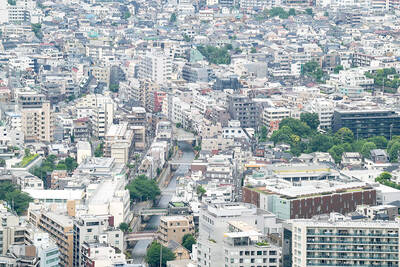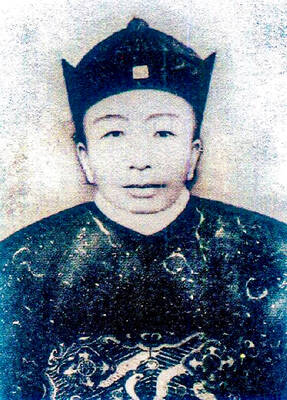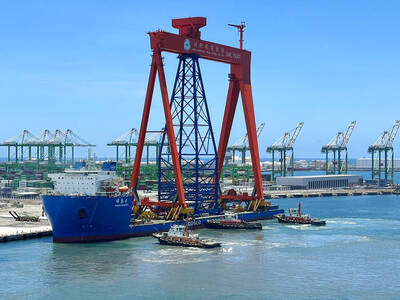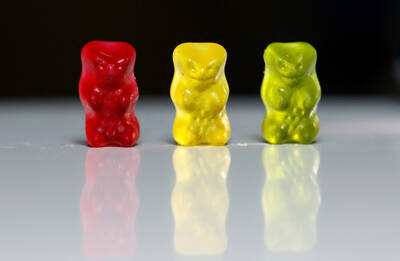To appreciate The Future, Miranda July’s ingeniously constructed wonder cabinet of a movie, you may first have to pass through a stage of mild annoyance or even something more intense. A recent profile in the New York Times Magazine depicted July — a quiet figure on the screen and a thoughtful, witty presence on the page — as an improbably polarizing filmmaker, as likely to be scorned for her supposed preciosity as celebrated for her ingenuity. And the first part of The Future seems, quite deliberately, to test the spectrum of audience response.
The two main characters, Sophie and Jason, a Los Angeles couple played by July and Hamish Linklater, are sweet and sincere, but also maddeningly passive, and their tentative, timid approach to their own lives might inspire equal measures of protectiveness and impatience. We first see them on the couch of their modest, bohemian apartment, each with a laptop, looking more like twins or a shaggy, bony, two-headed creature than a couple.
Sophie and Jason dwell in a state of becalmed, bemused anxiety. Though they are well into their 30s and measure the span of their relationship in years, they seem as shy and unworldly as children, passive-aggressively resisting the demands and enticements of adulthood. Sophie teaches dance classes for toddlers, Jason has a low-level tech job helping confused consumers troubleshoot over the phone, and the two of them, individually and as a pair, occasionally glance at a vague and receding horizon of ambition, artistic and otherwise.

Photo Courtesy of Joint Entertainment
“I thought by now I would have done more,” Jason says. “I thought I’d be a world leader.” There is enough ironic self-awareness in this observation to make it funny, and enough disappointment to make it sad and a bit irritating.
July subjects her characters — which is to say herself — to tactful satire without denying them sympathy. Sophie and Jason’s gentle, melancholy, cautious engagement with each other and with their own experience is self-conscious, but it also feels like an authentic response to the confusion and anomie that run like invisible threads through so much of American life.
Their scruffy, comfortable home, decorated with hippopotamus figurines and Escher prints, stocked with vintage-y clothes and rescued furniture, is a shrine to fading ideals of specialness. Their need to find and nurture a sense of uniqueness has led them into a state of quiet panic and paralysis — and also, perhaps, to the Etsy Web site, where you can purchase handmade or handed-down accouterments of individuality.
But The Future is much more than a precise, deadpan portrait of a sensibility likely to be recognizable to the Sophies and the Jasons in the audience (or to anyone who has run into them at the local coffee shop, organic bakery or artisanal ice cream truck). July’s gift as a filmmaker, very much evident in her first feature, Me and You and Everyone We Know, lies in her ability to will the prosaic facts of the world into a condition of wonder. The anti-literal aspects of The Future might be described as surrealism, magic realism or Jabberwockian nonsense, but none of these terms quite capture her ability to blend whimsy and difficult emotion.
The Future begins with narration supplied in the scratchy, high-pitched voice of a cat. This creature, a wounded, sickly stray known as Paw-Paw, is in a shelter, waiting for Jason and Sophie to adopt him. He represents their long-deferred acceptance of adult responsibility, and a chance to break out of the malaise of waiting around for something to happen. In the month before they take their new pet home — where they will provide him, above all, with a comfortable place to die — Jason and Sophie set out to make up for lost time. They quit their jobs, and Jason volunteers for an environmental organization, while Sophie sets out to record a series of dances that she hopes will bring her recognition.
Their forays into art and activism have mixed results, but The Future itself blossoms into something affecting and peculiar. In addition to the talking cat, there is a talking moon, a T-shirt that moves on its own and Jason’s sudden discovery of the power to stop time. These phenomena coexist with a more mundane story of betrayal and disappointment: a funny-sad relationship drama about love gone astray. Sophie, drifting away from Jason (and perhaps feeling the stirrings of a buried maternal instinct), stumbles into an affair with Marshall (David Warshofsky), a suburban dad whose main virtue seems to be his easy tolerance of eccentricity.
Another filmmaker might have told the tale of this love triangle in a straightforward fashion, putting together yet another mild, mopey movie about a young couple in crisis. But the magical, metaphorical strain in The Future is what makes it powerful, unsettling and strange, as well as charming. The everyday fears and frustrations that shadow us on our awkward trip through the life cycle often feel enormous, even cosmic, and July has the audacity to find images and situations that give form to those metaphysical inklings.
The complexity of The Future is contained in its title, which refers simultaneously to a terrifying abstraction — an unknowable territory bounded by death, eternity, the end of time — and to a concrete, trivial fact. What are you going to do next? It’s a huge, scary question, but the answer is usually to be small and specific. Use your imagination. Go see this movie.

The canonical shot of an East Asian city is a night skyline studded with towering apartment and office buildings, bright with neon and plastic signage, a landscape of energy and modernity. Another classic image is the same city seen from above, in which identical apartment towers march across the city, spilling out over nearby geography, like stylized soldiers colonizing new territory in a board game. Densely populated dynamic conurbations of money, technological innovation and convenience, it is hard to see the cities of East Asia as what they truly are: necropolises. Why is this? The East Asian development model, with

June 16 to June 22 The following flyer appeared on the streets of Hsinchu on June 12, 1895: “Taipei has already fallen to the Japanese barbarians, who have brought great misery to our land and people. We heard that the Japanese occupiers will tax our gardens, our houses, our bodies, and even our chickens, dogs, cows and pigs. They wear their hair wild, carve their teeth, tattoo their foreheads, wear strange clothes and speak a strange language. How can we be ruled by such people?” Posted by civilian militia leader Wu Tang-hsing (吳湯興), it was a call to arms to retake

This is a deeply unsettling period in Taiwan. Uncertainties are everywhere while everyone waits for a small army of other shoes to drop on nearly every front. During challenging times, interesting political changes can happen, yet all three major political parties are beset with scandals, strife and self-inflicted wounds. As the ruling party, the Democratic Progressive Party (DPP) is held accountable for not only the challenges to the party, but also the nation. Taiwan is geopolitically and economically under threat. Domestically, the administration is under siege by the opposition-controlled legislature and growing discontent with what opponents characterize as arrogant, autocratic

Desperate dads meet in car parks to exchange packets; exhausted parents slip it into their kids’ drinks; families wait months for prescriptions buy it “off label.” But is it worth the risk? “The first time I gave him a gummy, I thought, ‘Oh my God, have I killed him?’ He just passed out in front of the TV. That never happens.” Jen remembers giving her son, David, six, melatonin to help him sleep. She got them from a friend, a pediatrician who gave them to her own child. “It was sort of hilarious. She had half a tub of gummies,